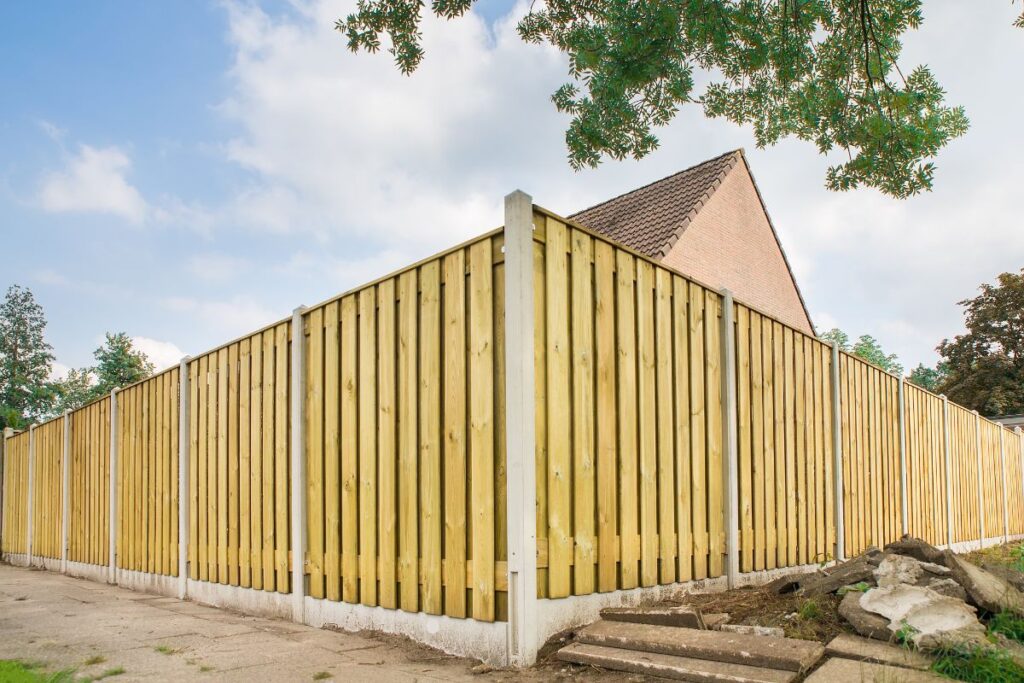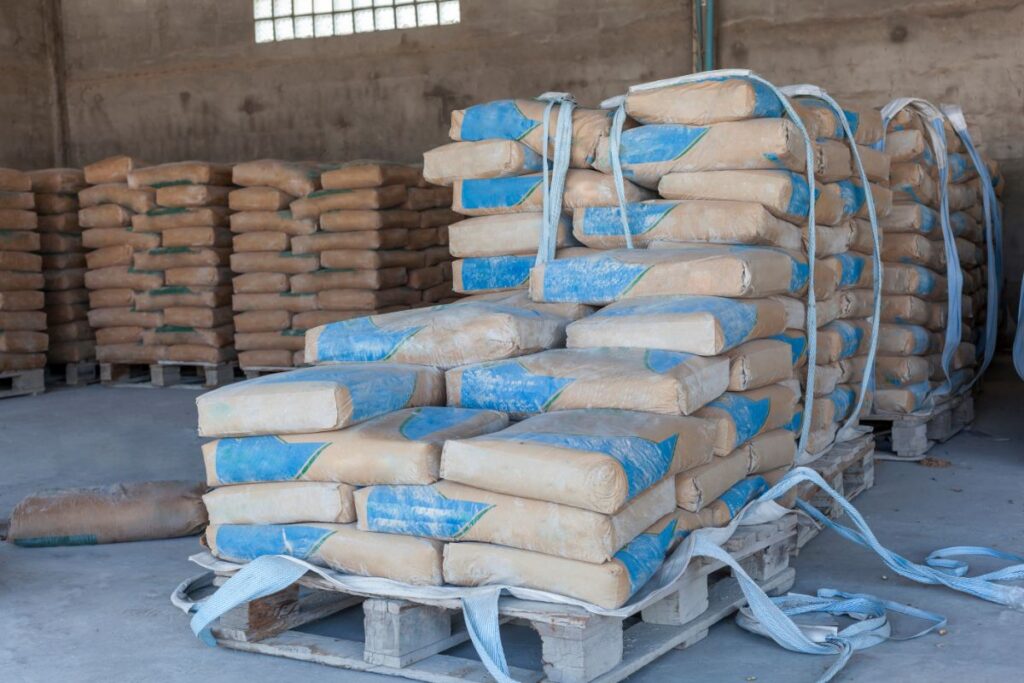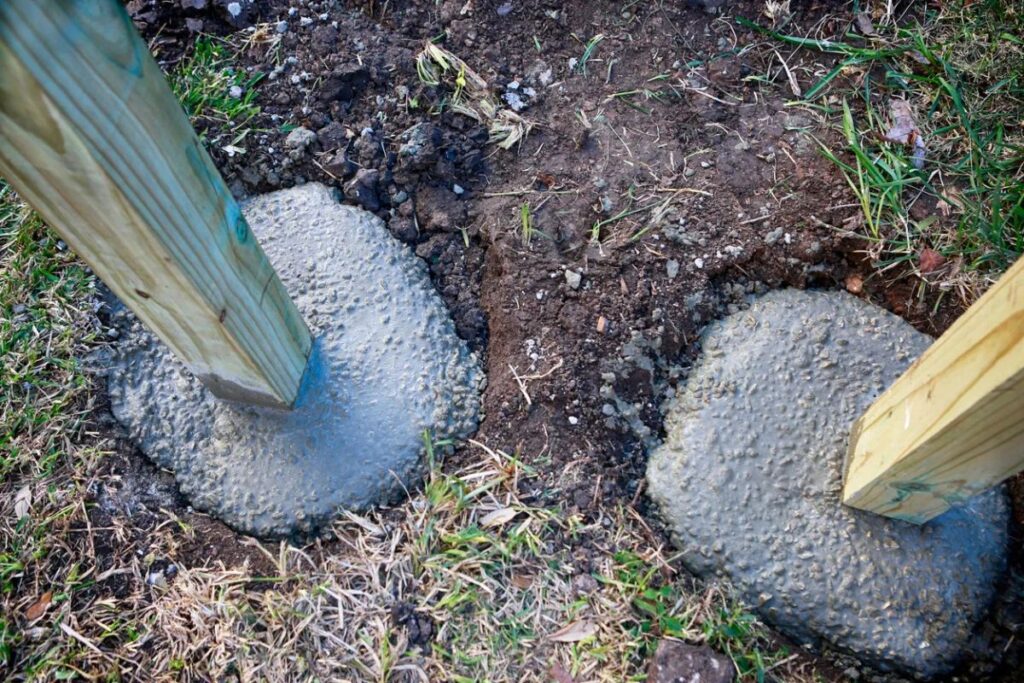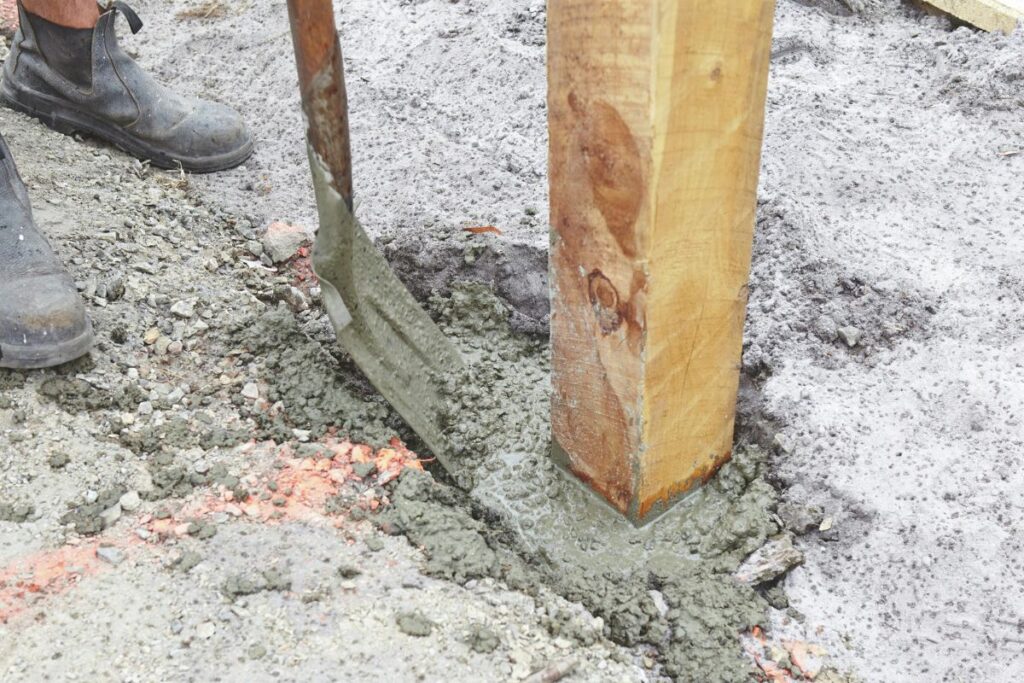When you are planning to put up a fence, a key question pops up: “How many bags of concrete per fence post?” This is not just about crunching numbers, it is about ensuring your fence is stable and lasts for years. Whether you’re tackling this as a weekend project or you’re a professional, knowing how much concrete each post needs is essential for a successful build.
In this guide, we will explore how much concrete you need for your fence posts, considering the soil type, and the size of your post holes. We will offer straightforward advice and tips from the pros to help you figure out the right amount of concrete, ensuring your fence can weather any storm and stand the test of time.
Why Does the Amount of Concrete Per Fence Post Matter?

The right amount of concrete for each fence post is crucial for your fence’s structural integrity and longevity. Understanding why you need it and how much concrete is needed can make the difference between a fence that lasts decades and one that fails prematurely. Here is why getting the concrete mix right is essential.
Ensuring Fence Stability
The primary role of concrete in fence post installation is to anchor the posts securely in the ground. Adequate concrete support prevents posts from shifting, leaning, or uprooting under environmental stresses such as wind, rain, and soil movement. Properly calculated and mixed concrete fills the post holes to create a solid foundation that distributes the stress evenly, enhancing the overall stability of the fence structure.
Prolonging Fence Lifespan
Using the correct amount of concrete per post stabilizes it and protects the wood from direct contact with soil, a major cause of rot and decay. Encapsulating the base of the post in concrete significantly reduces moisture infiltration, and pests that could potentially damage the wood are deterred. This protection extends the life of your fence, ensuring that it remains functional and aesthetically pleasing for many years, saving you time and money.
How Many Bags of Concrete Per Fence Post? Factors to Consider
Determining the correct amount of concrete per fence post is critical for constructing a durable and stable concrete foundation or retaining walls. Several key factors must be considered to calculate the precise quantity needed. These factors ensure that each post is adequately supported and can handle the fence’s structural demands.

Post Dimensions and Hole Size
The dimensions of the fence post and the size of the hole in which it is placed are primary determinants of concrete needs. A larger post or a deeper hole will naturally require more concrete to anchor it securely. Standard practice suggests that the hole should be three times the width of the post and one-third as deep as the fence height, which directly influences the volume of concrete required.
Type of Soil and Ground Conditions
The type of soil and its conditions significantly affect the amount of concrete required. Looser, sandier soils may not offer the same support as denser clay soils, potentially requiring more concrete to ensure stability. The soil’s moisture levels and drainage characteristics also impact the concrete’s setting time and overall stability, influencing how much concrete is necessary to form a solid base.
Fence Height and Weight
The height and weight of the fence are crucial factors, as taller or heavier fences exert more force on their posts and thus require more robust foundations. Higher or heavier fencing materials such as privacy panels or wrought iron will need a greater volume of concrete per post to maintain stability and durability. This is compared to lighter, shorter fences that have less overall weight behind them.
How Much Concrete Per Fence Post for a 4×4 Post?

Calculating the amount of concrete required for a 4×4 fence post is straightforward once you understand the basic principles. Using the right amount not only guarantees the stability and longevity of your fence but also optimizes your resources and time.
Standard Calculation for 4×4 Posts
For a standard 4×4 post, the hole should be about 9 to 12 inches wide and about 24 to 36 inches deep, depending on the height and the fence load. Typically, this size of a post and hole will require approximately 1.5 to 2 bags of 50-pound concrete mix. This calculation ensures that the post will be adequately secured in the ground, providing the necessary support for a stable fence.
Choosing the Right Bag Size
Concrete comes in various bag sizes, with 40-pound, 50-pound, and 60-pound bags being the most common. For 4×4 posts, 50-pound bags are usually sufficient and provide a manageable mix quantity for DIY projects. The choice of bag size can affect the number of bags needed, so selecting the appropriate weight can help streamline the process and reduce waste.
Using a Concrete Calculator
Using an online concrete calculator can be highly beneficial to simplify the calculation process and ensure accuracy. These calculators consider the diameter and depth of the hole along with the number of posts to provide an estimate of the total amount of concrete needed in cubic yards or bags. This tool can help avoid under- or over-purchasing concrete, making your project more cost-effective and efficient.
Tips for Mixing and Pouring Concrete for Fence Posts
Mix the concrete to the correct consistency to ensure a sturdy foundation for your fence posts. Follow the manufacturer’s instructions for the proper water-to-mix ratio, aiming for a thick, workable texture. Too much water can weaken the mix, while too little can make it hard to pour and set properly. Use a wheelbarrow or bucket for mixing and work in manageable batches to maintain consistency.

When pouring, fill the hole around the post in stages, tamping the concrete with a stick or trowel to eliminate air pockets and ensure a solid fill. For added stability, slope the surface of the concrete away from the post to direct water runoff and prevent pooling at the base. Allow the concrete to cure for at least 24 to 48 hours before applying any load or attaching fencing materials. Proper mixing and pouring are key to a long-lasting fence.
Common Mistakes When Calculating Bags of Concrete Per Fence Post
Missteps in calculating the amount of concrete needed for fence posts can lead to structural issues or wasted resources. Avoiding these common mistakes will ensure your fence is stable, durable, and efficiently constructed.
Underestimating Concrete Needs
Underestimating the amount of concrete required is a frequent mistake, often leading to poorly anchored posts that lack stability. Many fail to account for the depth and diameter of the post hole or the extra concrete needed to account for settling and compaction. Always calculate based on recommended hole dimensions, typically three times the post width and one-third the fence height. It is better to overestimate than risk running out mid-project slightly.
Ignoring Soil and Weather Conditions
Failing to consider soil type and weather conditions can impact the amount of concrete needed and its performance. Loose or sandy soil may require deeper holes and more concrete for stability, while wet or freezing weather can affect setting times and structural integrity. Always assess soil conditions before starting and plan for optimal weather to ensure proper curing and a stable fence foundation. These factors are critical for long-term success.
Conclusion
Determining how many bags of concrete per fence post is crucial for building a stable, long-lasting fence. By understanding key factors like post dimensions, soil conditions, fence weight and right concrete thickness , you can accurately calculate the concrete needed to anchor each post securely. Avoid common mistakes, such as underestimating concrete or ignoring environmental factors, to ensure your fence stands strong against time and weather.
Whether you are a DIY enthusiast or working with professionals, careful planning and proper execution make all the difference. These steps are essential for a successful fencing project, from calculating concrete requirements to mixing and pouring correctly. By following the guidelines outlined in this article, you can confidently build a functional and durable fence that will provide years of reliable service for your property.





